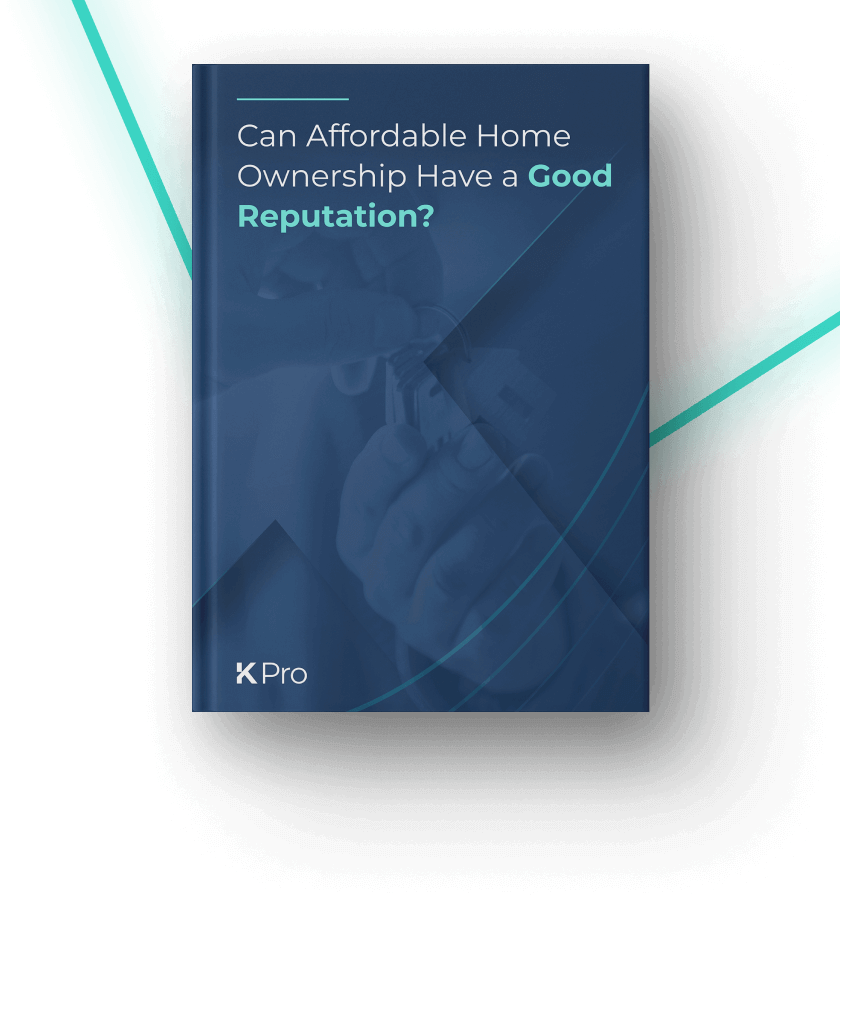
How Should Affordable Housing Providers Respond to the End of Help to Buy?
After nearly a decade in operation, the Government’s Help to Buy scheme, designed to help first-time home buyers get a foot on the property ladder, is ending by 31 March 2023. Without a direct replacement for Help to Buy lined up, shared ownership can step in as the natural alternative — but only if housing providers are able to step up and provide for home seekers and existing shared owners alike.
Recent research revealed that housing association shared ownership sales saw an increase of nearly 10% across England in 2019-2020.1 But to take advantage of this opportunity, affordable housing providers need to update how they use, gain insight and support customers through their existing sales and letting processes — to match the efficiency and customer experience digitisation has brought to the commercial market. By succeeding here, providers can generate funds for reinvestment across all types of affordable housing.
Fortunately, there are an array of digital tools available that can help affordable home ownership providers efficiently manage the process of marketing, sales, and lettings from A to Z. Let’s take a look at how housing providers can respond to, and benefit from, the end of Help to Buy
Suggested reading: For more on how shared ownership can use technology to transform the market and its reputation, check out our eBook — Can Affordable Home Ownership Have a Good Reputation?

Is the End of Help to Buy Good for Affordable Housing Providers?
Help to Buy has been important to the affordable housing market. As one of the most successful schemes in the market, it helped people get into homes — and may have even helped to improve the reputation of the wider market.
Compared with shared ownership, however, it was a more expensive option. Deposits were higher, stamp duty always had to be paid, and there was no maximum income cap, which broadened the appeal to people outside of low income. Coupled with the new shared ownership model, providers need to shout about the benefits of shared ownership to position the scheme as the natural successor to Help to Buy.
Shared ownership customers currently only make up an estimated 5 to 10% of the tenants of the average housing association. However, while this might seem like a small customer segment, their contribution towards industry success is crucial, because they generate a significant amount of the revenue for housing associations. This is needed to sustain the industry as a whole.
Affordable housing providers should view this an opportunity to focus on promoting shared ownership properties. By bringing in revenue, this can be reinvested back into internal improvement, such as customer experience, and wider industry improvements, such as expanding housing stock. This benefits the market as a whole.
But to deliver this kind of industry-wide transformation, providers need to embrace the affordable housing technology that can improve governance, maximise efficiency and deliver positive customer experiences to providers and customers.
The digital tools modernising the affordable housing market
There is significant pressure on affordable housing providers to do more with less. Compared with the commercial market, tools have typically been clunky and impractical. Regulatory bodies need to be satisfied and complicated contracts and listing requirements fulfilled. Moreover, it’s nearly impossible to increase efficiency when your sales and letting process is not streamlined from start to finish.
Luckily, there are now specialised digital tools designed with and for housing associations to improve your association’s marketing, sales and lettings process, helping you concentrate your efforts on increasing market share in the shared ownership segment.
The right technology can help affordable housing generate shared ownership leads and support them through their journey to improve overall customer experience.
Improving customer experiences starts internally.
Learn how you can create a complete end-to-end system for your business
Transform customer experience
Turning leads into customers is at the heart of your organisation. Using the right tools can help do this, while improving every aspect of the customer journey — from helping home seekers find the right property to simplifying the sales and letting process. This includes:
- Lead centralisation: By centralising leads and creating a streamlined lead management process, you can keep track of all your prospects and leads across all listing sites in one place. This allows for personalised and timely communication with your customers at every stage of the process.
- Self-service: Providing customers with a self-service portal is a helpful way for homeseekers and homeowners to take control of their entire journey. Self-service tools enables them to “favourite” listings and properties; track viewings, appointments and documents; create moving in arrangements; and log repair requests.
Improve back-end efficiency
A disjointed sales and lettings process reduces efficiency, and might mean you miss out on potential customers if you can’t contact them at the right time in the right way.
Investing in new digital tools can simplify the process, leading to a streamlined sales and lettings process. With these efficiency gains, you can redeploy saved time and resources elsewhere, helping to generate revenue and focus reinvestment elsewhere.
- Integrated CRM: While housing providers can use CRMs designed for the commercial market, you’ll need to spend time and money on expensive customisations to take into account industry-specific requirements. Providers should use an affordable housing CRM tailored to their unique needs. By integrating your tools together, or using a modular solution to make your tech stack communicate, you can easily manage multiple workflows simultaneously, and keep on top of leads.
- Automation: Drawing on the information in your CRM, you can automate personalised marketing processes to help you reach the right prospects at the right time. You can also use new tools that automates processes, simplifying and speeding up critical steps in the journey.
Reporting and analytics: A real-time reporting system is essential to track progress. From lead tracking to key dates in the buyer’s journey, you’ll need a tool that can give you detailed reports on all aspects of your sales and marketing process. A centralised dashboard to access all your reports can help you make data-driven decisions and keep track of the bigger picture.
What outcomes can digital tools have?
By embracing new digital tools, housing providers bring their marketing, sales and letting service into the 21st century and in line with the commercial market. This means that, when Help to Buy ends, providers can not only position shared ownership as the natural successor to Help to Buy, but take advantage of the increased demand that comes with this.
By getting more people in more shared ownership homes, revenue increases. This enables reinvestment within shared ownership but across the wider market too, leading to benefits for all housing providers’ customers.

An opportunity for housing providers
Help to Buy has helped people get on the housing ladder. But even before the new shared ownership model, the shared ownership scheme was more affordable for people on low income looking to get on the housing ladder. With Help to Buy ending, and by embracing transformative digital tools, housing providers can capitalise on this — and help get the more people in shared ownership homes.
KPro’s digital toolkit has been designed specifically for the affordable housing market, focused on the unique needs of affordable and shared home ownership providers. Through lead centralisation, automation functions, customer self-service tools, and reporting and analytics functions, the toolkit:
- Streamlines marketing, sales, and letting processes from start to finish
- Delivers excellent customer service via personalised sales and letting processes
- Improve operations strategy using insights gleaned from reporting dashboards and centralised CRMs.
- Helps strategic, long-term thinking by pooling data into a single source-of-truth and generating reports.
Pro tip: If you’re not looking for an end-to-end solution, KPro can be used as a modular tool that can integrate easily with your existing set of tools to give you the flexibility you need to manage your sales and lettings process from the ground up.
Want to know how KPro can help? Book a demo to learn more today.
1 Special report: housing association shared ownership sales rise almost 10% in 2020
About The Author
Computer science graduate with over 15 years of housing experience. Leading sales, marketing, research and development teams, and strategies, at G15 organisations such as L&Q and Southern Housing Group.







